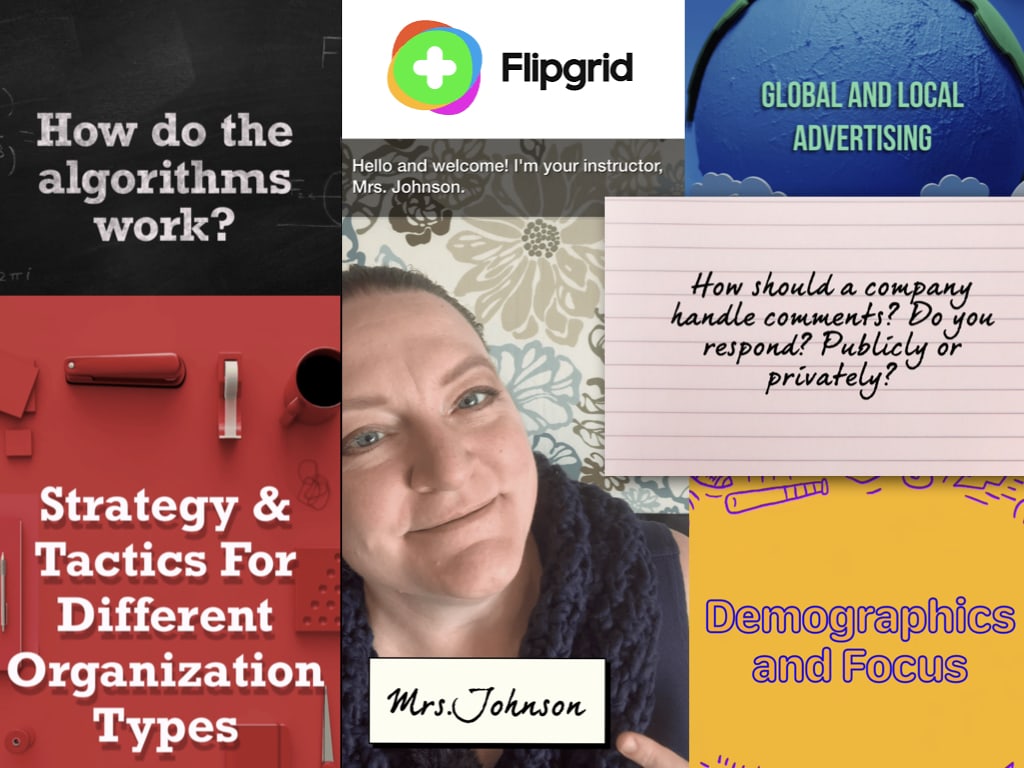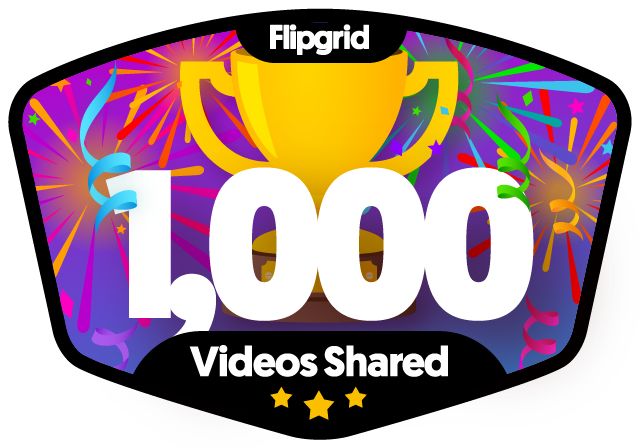How can we encourage and create space for shared student learning experiences?
Enhancing collaborative learning experiences presents challenges and opportunities. This case study explores strategies I’ve used to successfully encourage students to share and learn together.
Situation and Challenges
To prepare students for careers, we need to connect what they learn in school to real-life situations. As a committed teacher shaping future marketers, I aimed to blend these areas. My goal wasn’t just subject knowledge but also adaptable skills. Along the way, I encountered many challenges to collaborative learning that needed creative solutions. Some of the most tricky were:
- Engagement and Participation Dynamics: Some students showed disinterest or hesitated to participate actively in collaborative activities, hindering effective learning.
- Balancing Participation: Unequal contributions during discussions created disparities in learning opportunities, calling for solutions to promote balanced participation.
- Conflict Resolution: Collaborative learning sometimes led to conflicts between students with differing viewpoints, potentially disrupting the learning process.
- Lack of Problem-Solving Skills: Students lacked exposure to complex real-world scenarios, impacting their ability to contribute effectively to collaborative tasks.
Approaches and Methods
Shifting Roles: From Expert to Facilitator
I learned that I needed to shift from a traditional role as a content expert to a facilitator, guiding students through the learning process.
I also decided that I needed to:
- Set the stage for collaborative learning from the start
- Encourage participation throughout the course
- Cultivate trust through shared experiences
To accomplish this, I devised 3 types of activities and assignments.
Implementing Strategies: Goals for Learning, Discussions, and Peer Reviews
1. Goals for Learning: Tailoring Engagement
- Engaging students’ curiosity by tailoring the course to their interests.
- Initiating collaborative brainstorming to gather students’ questions.
- Evolving question prompts to ensure comprehension and encourage respectful idea sharing.
To begin a great learning experience, I knew I needed to find ways to foster engagement and ownership. In my research, I found that tailoring the course to students’ interests was a great way to do this. However, I also needed to balance my research commitments with teaching responsibilities.
So instead of trying to figure out what they were curious about, I decided to just ask them.
One of the very first exercises I created and facilitated was a collaborative brainstorming effort. After introducing students to some of the basic concepts and technologies we’d explore in more depth in the course, I asked them to help me come up with a list of questions they had about the course topic.
| HISTORY | What is the history of mobile & how does it influence culture, society, and marketing? |
| WHAT & WHY | What IS Mobile Messaging and WHY is it important? |
| HOW & STARTING | How do I get started with mobile marketing? |
| HOW | How can I use technology as a tool for effective, cost-efficient marketing? |
| SOCIAL MEDIA | How do Social Media and mobile marketing go together? What are their differences? |
| STRATEGY | How do I learn mobile campaign strategy? |
| STRATEGY & MISTAKES | What are some mobile Marketing mistakes I can avoid? |
| STRATEGY & BRANDING | How can I convey the right Tone or Brand Voice on Mobile? |
| STRATEGY & ADVERTISING | Including Retargeting, what kinds of Advertising Strategies can I use on Mobile? |
| ANALYTICS | How and what can you track, measure and analyze in mobile marketing? How do I determine my mobile-user demographics? |
| WEBSITES | Mobile Websites – what are they and how do you use one in marketing? |
| EFFICIENCY | How do I create effective messaging and content for mobile audiences? |
| HUMAN | How do I create mobile messaging that is authentic, organic & genuine vs. contrived, bland or offensive? |
| HUMAN | How does mobile marketing affect the relationship with the consumer (especially in cases where human interaction is minimized or eliminated – i.e. self-checkout)? |
| INTERNAL/BUSINESS | How can I use Mobile Marketing in B2B or internal business communications? |
| FUTURE | What is the future of Mobile Marketing? How does it relate to AR/VR, the Internet of Things, Wearables and AI? |
| LAWS & ETHICS | What are the laws and ethics of marketing via mobile? |
| COMPETITION | What businesses/industries are using mobile marketing and how experienced are they with the technology? |
| CAREER | How do I increase my chances of landing a great job in marketing? |
| CAREER | How do I show employers my experience with mobile marketing? |
| CAREER | How do I avoid burnout while balancing a career that includes many aspects of marketing? |
| M-COMMERCE | Including self-checkout, what options are available (and upcoming) for sales and transactions via mobile? |
| SERVICE-BASED BUSINESS | How can Event or Service-based (vs. Product-based) businesses effectively leverage mobile? |
| FINANCIAL | What is the ROI of mobile marketing? How do you determine it? |
My approach and setup for the question evolved over time. I learned that prompting them before they understood a few fundamentals about the topic didn’t produce the valuable insights I was looking for, nor did it do much to build a foundation for an open and safe space for ideas. I also learned ways to model to students how to respectfully build their thinking off one another’s ideas and encourage innovation.
Furthermore, I discovered a powerful method to seamlessly incorporate this questioning technique later in the course, fostering equitable engagement. I assigned students specific weekly topic questions to answer, and shared them with the class anonymously for discussion.
2. Discussions: Active Participation and Feedback
- Implementing Flipped Classroom format for open discussions.
- Setting up expectations for civil discourse and assigning prompt-based discussions.
- Refining assessment with transparent spreadsheet rubrics.
My initial thoughts on how to keep the conversation open throughout the semester settled on having open discussions in class. I set this up in a Flipped Classroom format, where students would research and informally present a recent news story related to the course topic, and I’d open the floor to questions and comments. I iterated on this over my teaching career, adapting to different modalities and technologies.
I set expectations for civil and respectful conversations up-front in both my syllabus and assignment directions. Each week, I set up a prompt and comments assignment for students. They started out as simple text-based online forums in the Learning Management System (LMS). To complete the assignment, students needed to answer the prompt, and comment on no less than 2 of their classmate’s answers.
Over time, I found the need to refine the requirements and instructions. I also found it very challenging to go through all the written answers (about 25 per week) and comments (about 50 per week) and give timely and valuable feedback. Crafting a spreadsheet rubric enhanced transparency in assessment and expedited the grading process.

Keeping up with rapidly evolving technologies and integrating them into teaching means you have to stay open to new things. As I sought to make the process even easier for myself and students and more applicable to the professional marketing world, social media platforms like YouTube and Instagram were gaining traction. Mindful of students’ technical and financial challenges, I migrated the Discussions assignments to Flipgrid.

Every week, I shared a video prompt that related to the topics or concepts we were currently studying. Students created video “Responses”, and posted text or video “Comments” on classmates’ Responses. I encouraged students to share image and video examples to make their arguments stronger, and gave them tips on how to adjust for good lighting and sound.
Peer feedback was a valuable aspect of our Discussions, but I wanted to ensure everyone had equal learning chances by preventing last-minute work. To encourage timely participation, I provided rewards to students who posted their Responses early. This enabled their peers to view and provide Comments on their Responses before the deadline.
3. Peer Reviews: Enhancing Peer Feedback
- Incorporating peer feedback skills into final project assessment.
- Promoting inclusive and constructive feedback inspired by Brené Brown’s approach.
- Transitioning to a graded completion assignment to ensure engagement and valuable critique.
After a semester of practicing peer feedback, I aimed to apply these skills to their peers’ final projects. Engaging students in their peers’ presentations at the semester’s end was tough. Crafting their own presentations absorbed their focus, making it hard to hold their attention during classmates’ presentations. To spark a final learning opportunity, I introduced a Peer Feedback assignment.
Inspired by Brené Brown’s “Feedback from students to students giving presentations” in her book “Daring Greatly,” I adopted an inclusive and positive approach. This technique proved valuable for students to grasp essential skills in peer critique and feedback, crucial in the marketing field.
Transforming it into a graded (completion only) assignment ensured students engaged with their peers’ group projects, providing insightful feedback. This process allowed me to anonymize and export their reviews for distribution to the student groups.
Outcomes and Response
By initiating the Goals for Learning, Discussions, and Peer Review activities throughout the course, I was able to accomplish several key objectives.
Nurturing Enthusiasm
Tailoring the course content to individual interests enhanced overall learning experiences, sparking enthusiasm and deeper understanding.
First, the Goals for Learning activity allowed me to collect and assess students’ individual interests and curiosities at the start. This insight played a vital role in tailoring the course content to resonate with their passions and motivations, enhancing their overall learning experience.
Discussions enabled students to discuss interests, linking theory and real-world use. This sparked enthusiasm, deepened understanding, and empowered unique perspectives, enriching the learning environment.
Revolutionizing Classroom Dynamics
Flipgrid discussions facilitated problem-solving, critical thinking, and technical skills, creating an environment where innovation was encouraged.
Second, these collaborative exercises worked as a catalyst in creating an environment where ideas and innovation were not only welcomed but actively encouraged.
For a span of 3 years, I conducted discussions on Flipgrid, resulting in over 1,000 videos shared and more than 3,000 comments exchanged between my students and me on the platform. Utilizing Flipgrid’s concise video format proved transformative in prompting students to engage in problem-solving and critical thinking.
It also facilitated the cultivation of technical skills crucial for their upcoming careers, enabling them to delve deeper into their responses and raise highly insightful perspectives. In response to an end-of-course survey question: “What did you like MOST about the course?”, one student answered: “I enjoyed the Flipgrids, at first I wasn’t a fan but it was a fun way of learning and also teaching my peers.”
In a similar way, the Peer Reviews didn’t just offer my viewpoint, but also provided crucial peer feedback. Following a semester of collaborative learning, this ultimate capstone cemented students’ collective growth and mastery in exchanging constructive feedback.
Cultivating this environment laid the foundation for the classroom to evolve into a secure space for diverse perspectives and novel thinking. As a result, students felt comfortable sharing their thoughts, knowing that their contributions were valued and respected.
Cultivating Trust and Engagement
Student empowerment and collaboration cultivated a supportive learning community, leading to active engagement, even in the transition to online learning.
Finally, these initiatives also played a crucial role in relationship-building. By inviting students to shape the direction of their learning, it demonstrated my commitment to their growth and empowered them as active participants in their educational journey.
This mutual respect and openness built trust that reached beyond the classroom, creating a stronger, more supportive learning community. Flipgrid Discussions notably promoted active engagement and meaningful online conversations. Not quite a year after I began using Flipgrid, when the pandemic shifted us to online learning, our Discussions continued seamlessly.
Ultimately, these practices fortified our learning community, paving the way for a resilient and supportive space where knowledge was shared, valued, and respected.


